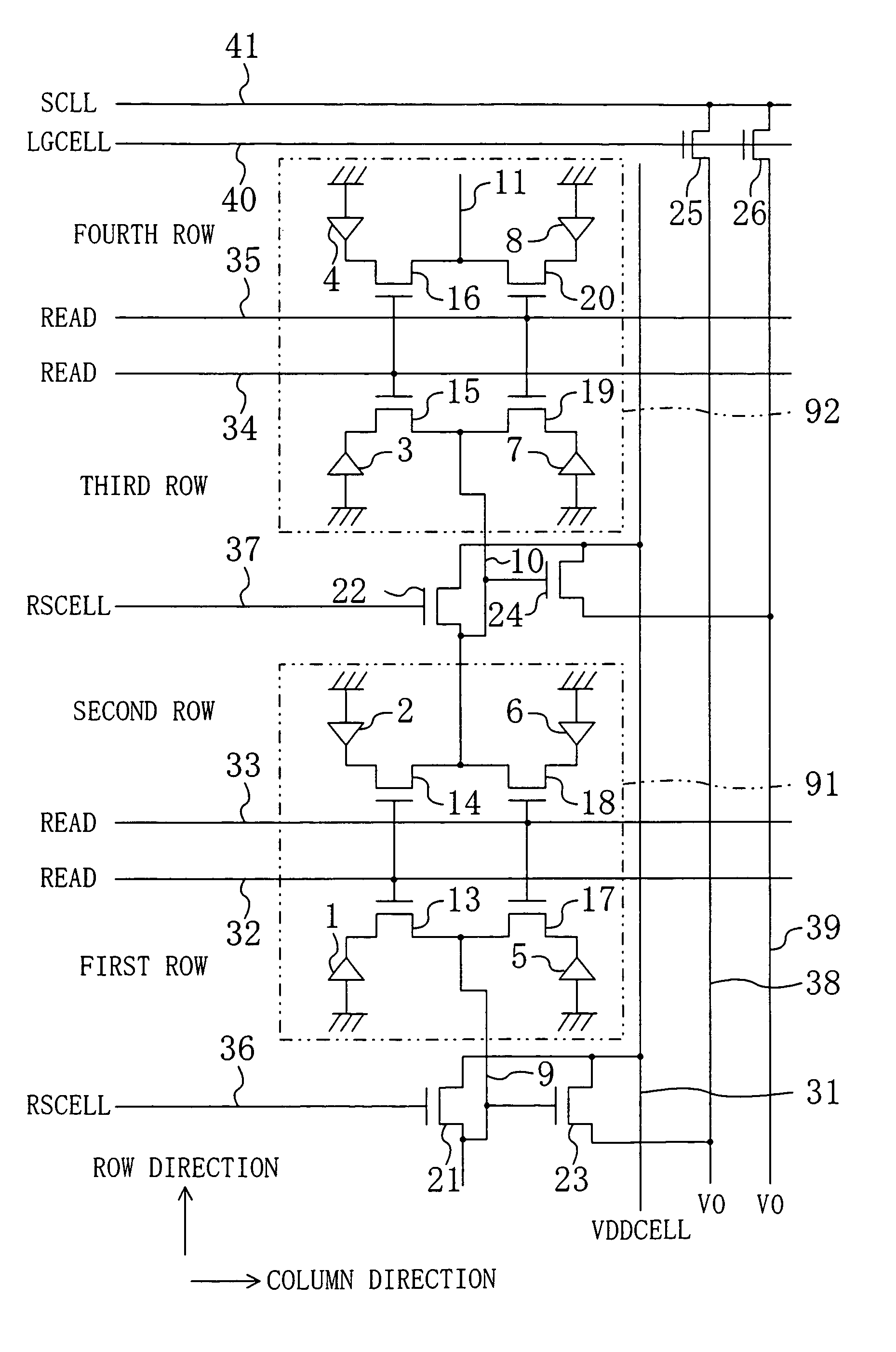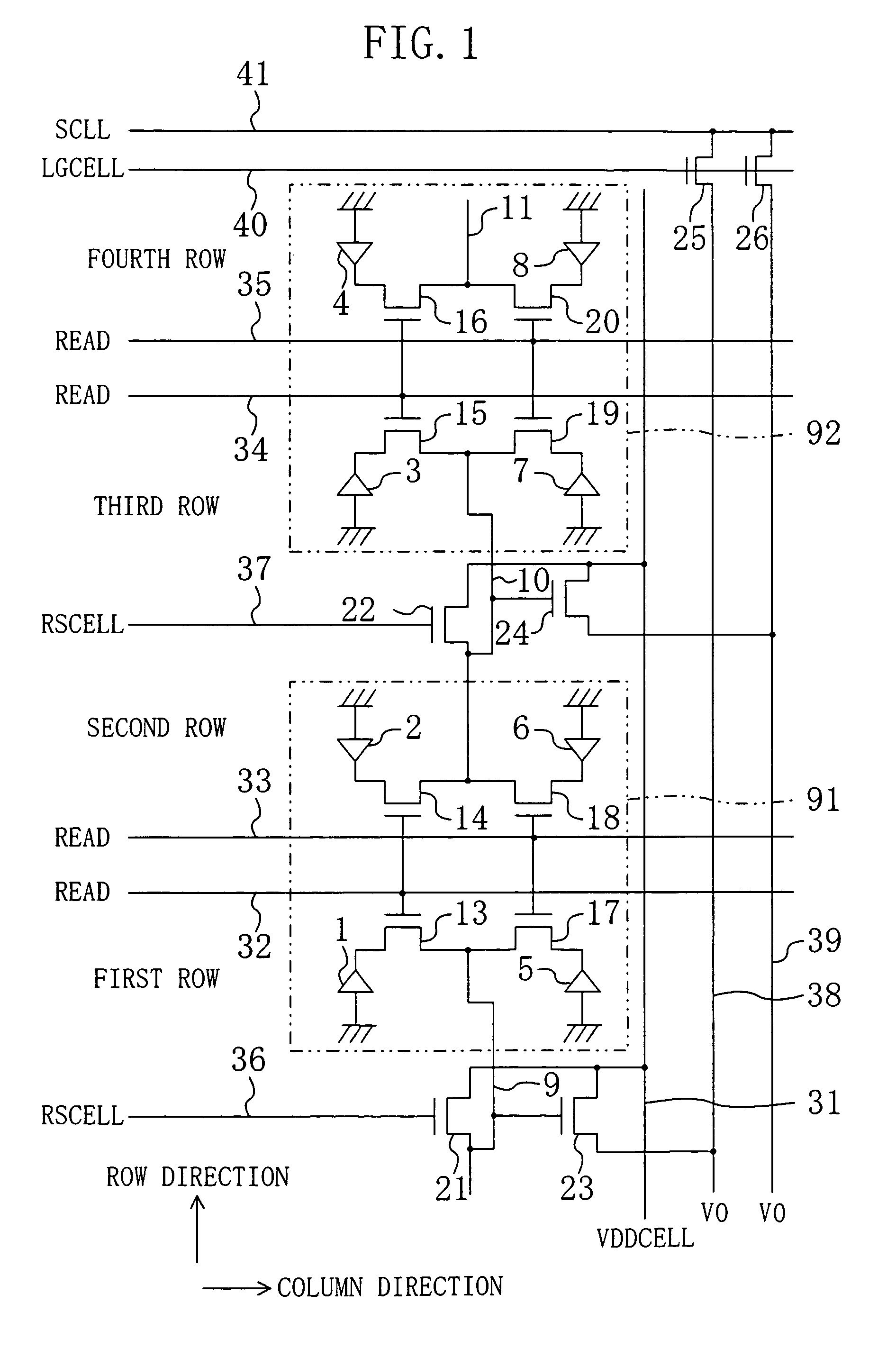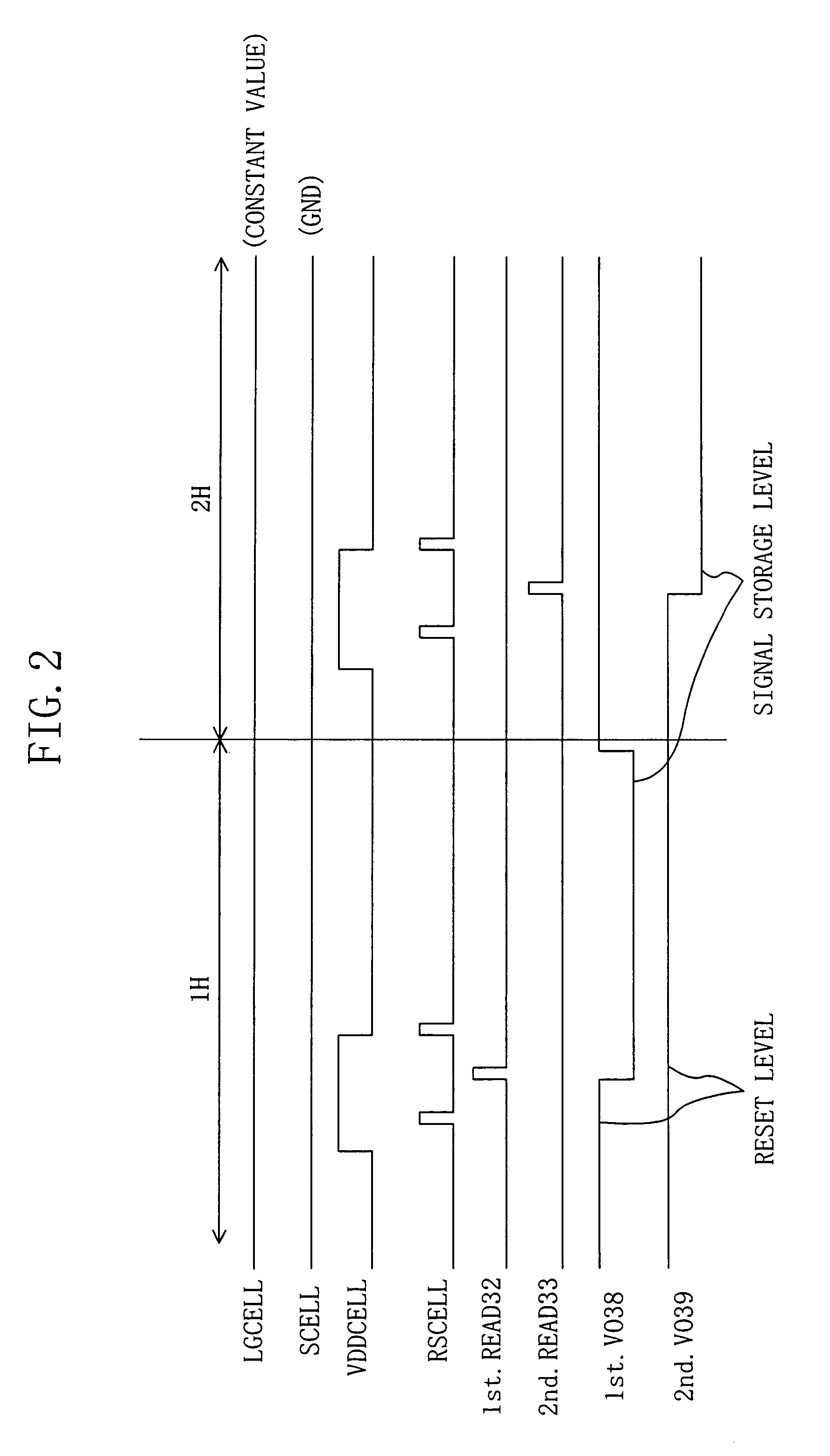Solid state imaging apparatus, method for driving the same and camera using the same
a technology of solid-state imaging and camera, which is applied in the direction of television system scanning details, radioation control devices, television systems, etc., can solve the problems of reducing the size of the photoelectric conversion cell, unable to ensure a sufficiently large opening area of the pd section b>101, etc., and achieves high-resolution images
- Summary
- Abstract
- Description
- Claims
- Application Information
AI Technical Summary
Benefits of technology
Problems solved by technology
Method used
Image
Examples
first embodiment
Modified Example of First Embodiment
[0084]FIG. 3 is a diagram illustrating a circuit configuration of a photoelectric conversion cell in a solid state imaging apparatus according to a modified example of the first embodiment of the present invention. Also, in this modified example each member also shown in FIG. 1 is identified by the same reference numeral, and therefore, description thereof will be omitted.
[0085]As shown in FIG. 3, for example, in the first photoelectric conversion cell 91, the first READ line 32 is connected to the transfer transistor 13 and the transfer transistor 18 included in adjacent columns, respectively, while the second READ line 33 is connected to the transfer transistor 14 and the transfer transistor 17 included in adjacent columns, respectively. Thus, even if connections are made with respect to the PD sections 1, 2, 5 and 6 included in two adjacent rows with the first and second READ lines 32 and 33 interposed between the PD sections 1 and 5 and the PD...
second embodiment
[0089]Hereinafter, a second embodiment of the present invention will be described with reference to the accompanying drawings.
[0090]FIG. 4 is a diagram illustrating an example of circuit configuration of a photoelectric conversion cell in a solid state imaging apparatus according to a second embodiment of the present invention. In FIG. 4, each member also shown in FIG. 1 is identified by the same reference numeral, and therefore, description thereof will be omitted.
[0091]First, differences of the solid state imaging apparatus of FIG. 4 from that of the first embodiment shown in FIG. 1 will be described.
[0092]In the second embodiment, an configuration in which the first and second pixel amplifier transistors 23 and 24 are connected to the first and second output signal (VO) lines 38 and 39, respectively, via the first and second select transistors 52 and 53 each of which made of an N channel FET, respectively, is used.
[0093]To the respective gates of the first and second select trans...
third embodiment
[0107]Hereinafter, a third embodiment of the present invention will be described with reference to the accompanying drawings.
[0108]FIG. 6 is a diagram illustrating an example of circuit configuration of a photoelectric conversion cell in a solid state imaging apparatus according to a third embodiment of the present invention. In FIG. 6, each member also shown in FIG. 1 is identified by the same reference numeral, and therefore, description thereof will be omitted.
[0109]As shown in FIG. 6, in the solid state imaging apparatus of the third embodiment, first through fourth photoelectric conversion cells 91, 92, 93 and 94 are arranged in a matrix.
[0110]For example, the first photoelectric conversion cell 91 includes photoelectric conversion (PD) sections 1 and 2 arranged in regions which is located in the first column of an array and the first row and which is located in the first column of and the second rows of the array, respectively. The PD sections 1 and 2 share a first FD section ...
PUM
 Login to View More
Login to View More Abstract
Description
Claims
Application Information
 Login to View More
Login to View More - R&D
- Intellectual Property
- Life Sciences
- Materials
- Tech Scout
- Unparalleled Data Quality
- Higher Quality Content
- 60% Fewer Hallucinations
Browse by: Latest US Patents, China's latest patents, Technical Efficacy Thesaurus, Application Domain, Technology Topic, Popular Technical Reports.
© 2025 PatSnap. All rights reserved.Legal|Privacy policy|Modern Slavery Act Transparency Statement|Sitemap|About US| Contact US: help@patsnap.com



